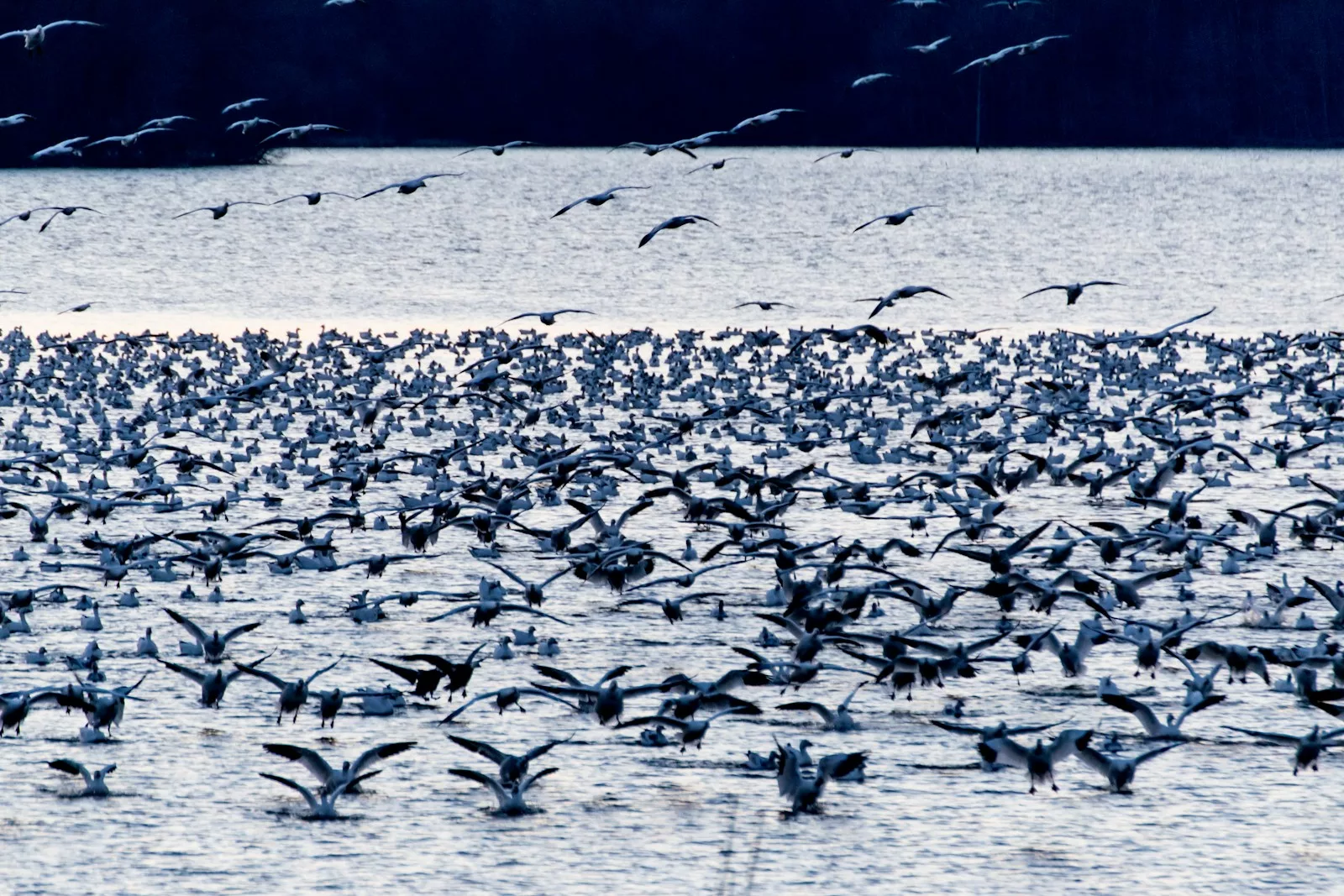Bird migration is one of the most awe-inspiring phenomena in the natural world. Each year, millions of birds traverse thousands of miles across continents and oceans, navigating with astonishing precision to reach their seasonal destinations. For centuries, humans have marveled at this incredible display of endurance and instinct, wondering why birds undertake such perilous journeys. What drives them to leave their homes and embark on these epic flights?
The answer lies in survival and reproduction. Migration is a strategy that allows birds to take advantage of seasonal changes in food availability, breeding conditions, and climate. But the story of bird migration is far more complex than just moving from point A to point B. It involves intricate behavioral adaptations, physiological changes, and navigational feats that defy human comprehension. In this article, we will explore the reasons behind bird migration, the mechanisms that make it possible, and the challenges birds face along the way.
The Primary Reasons Birds Migrate
1. Searching for Food
The primary driver of bird migration is the search for food. Seasonal changes in temperature and weather can drastically alter the availability of resources, particularly in temperate and Arctic regions. During winter, insects, fruits, and other food sources become scarce or disappear altogether, making it difficult for birds to sustain themselves in their breeding habitats.
To avoid starvation, many birds migrate to warmer regions where food is more abundant. For example, insectivorous birds such as warblers travel to tropical areas during the winter months, where they can find ample insects to eat. Similarly, seed-eating species like finches and sparrows move to areas with more plentiful vegetation. Migration ensures that birds can continue to meet their energy needs even when local resources are insufficient.
2. Optimizing Breeding Conditions
Another critical reason for migration is the need to optimize breeding conditions. Birds often migrate to regions where the climate, habitat, and food availability are ideal for raising their young. For instance, many species travel to northern latitudes during the spring and summer because these areas offer long daylight hours, abundant food, and fewer predators during the breeding season.
The Arctic tern, one of the most famous migratory birds, travels from its wintering grounds in Antarctica to the Arctic each summer to breed. This incredible journey, spanning tens of thousands of miles, allows the tern to take advantage of the continuous daylight and plentiful fish in the Arctic. By migrating to these favorable breeding grounds, birds increase their chances of successfully raising their offspring.
3. Escaping Harsh Weather
Migrating birds often move to escape harsh weather conditions that would make survival difficult. Many species that breed in temperate or polar regions migrate to avoid the freezing temperatures, heavy snow, and storms of winter. These conditions not only reduce food availability but also increase the energy demands on birds, making it harder for them to maintain their body temperature and survive.
By migrating to milder climates, birds can conserve energy and avoid the risks associated with extreme weather. This seasonal movement allows them to thrive in environments that are better suited to their physical and ecological needs.
The Mechanics of Bird Migration
1. Physiological Adaptations
Bird migration is an extraordinary feat that requires significant physiological adaptations. In preparation for their journeys, many birds enter a phase called hyperphagia, during which they consume large amounts of food to build fat reserves. These fat stores provide the energy needed to sustain long flights, sometimes over thousands of miles without stopping.
During migration, birds undergo changes in their metabolism to maximize energy efficiency. Their bodies are optimized to burn fat at a steady rate, ensuring they have enough fuel to complete their journey. Some species, such as the bar-tailed godwit, can fly nonstop for several days, relying entirely on these stored energy reserves.
2. Navigational Skills
One of the most remarkable aspects of bird migration is their ability to navigate with incredible accuracy. Birds use a combination of cues to find their way, including the position of the sun, stars, and Earth’s magnetic field. Many species also rely on visual landmarks, such as coastlines, rivers, and mountain ranges, to guide them.
Recent research has shown that some birds possess specialized proteins in their eyes that allow them to detect magnetic fields, providing an internal compass for navigation. This innate ability, combined with learned knowledge of migration routes, enables birds to travel vast distances and return to the same breeding or wintering grounds year after year.
3. Timing and Coordination
The timing of migration is critical to its success. Birds rely on environmental cues, such as changes in daylight length and temperature, to determine when to begin their journeys. These cues help ensure that they arrive at their destinations at the optimal time for food availability, breeding, or other ecological needs.
Many birds migrate in flocks, which provides several advantages, including protection from predators and increased efficiency in flight. For example, geese and cranes often fly in V-shaped formations to reduce air resistance and conserve energy. This coordination allows them to cover greater distances with less effort, increasing their chances of a successful migration.
The Challenges of Migration
1. Physical Demands
Migration is an incredibly demanding process that requires birds to push their physical limits. Long-distance flights consume vast amounts of energy, leaving birds vulnerable to exhaustion and starvation. To complete their journeys, birds must carefully balance their energy use with the need to rest and refuel along the way.
Stopover sites, where birds can rest and replenish their energy, are critical to the success of migration. However, habitat loss and environmental changes have reduced the availability of these sites, making migration even more challenging for many species.
2. Predation
Migration exposes birds to increased risks of predation. During their journeys, birds may encounter predators such as hawks, falcons, and other raptors that target migrating flocks. Additionally, birds that migrate at night must contend with the dangers of nocturnal predators, including owls and certain mammals.
The concentration of birds at stopover sites also makes them more vulnerable to predation. Despite these risks, the benefits of migration—access to food, optimal breeding conditions, and favorable climates—often outweigh the dangers.
3. Human Impacts
Human activities pose significant threats to migratory birds. Habitat destruction, climate change, and pollution have disrupted migration patterns and reduced the availability of resources. For example, the draining of wetlands has eliminated critical stopover sites for waterfowl and shorebirds, forcing them to travel longer distances without rest.
Light pollution and collisions with man-made structures, such as buildings and wind turbines, are also major hazards for migrating birds. Conservation efforts, including habitat restoration and the creation of bird-friendly policies, are essential to protecting these species and ensuring the survival of their incredible journeys.
The Ecological Importance of Migration
Bird migration plays a vital role in maintaining ecological balance and biodiversity. Migratory birds contribute to ecosystems in several ways, including pollination, seed dispersal, and pest control. For example, hummingbirds pollinate flowers as they feed on nectar during their journeys, while frugivorous birds spread seeds that help regenerate forests.
Additionally, migratory birds serve as prey for predators and scavengers, supporting the food web in both their breeding and wintering grounds. By connecting ecosystems across vast distances, migration fosters global biodiversity and enhances the resilience of natural systems.
Conclusion
Bird migration is a remarkable adaptation that showcases the resilience, intelligence, and interconnectedness of the natural world. Driven by the search for food, optimal breeding conditions, and favorable climates, birds undertake incredible journeys that test their endurance and navigational skills. Despite the challenges they face, including physical demands, predation, and human impacts, migratory birds continue to inspire awe and wonder.
Understanding the reasons behind bird migration not only deepens our appreciation for these extraordinary creatures but also highlights the importance of conservation efforts to protect their habitats and ensure the survival of their journeys. As we learn more about the science of migration, we can work toward a future where birds and their seasonal travels continue to enrich our world.




